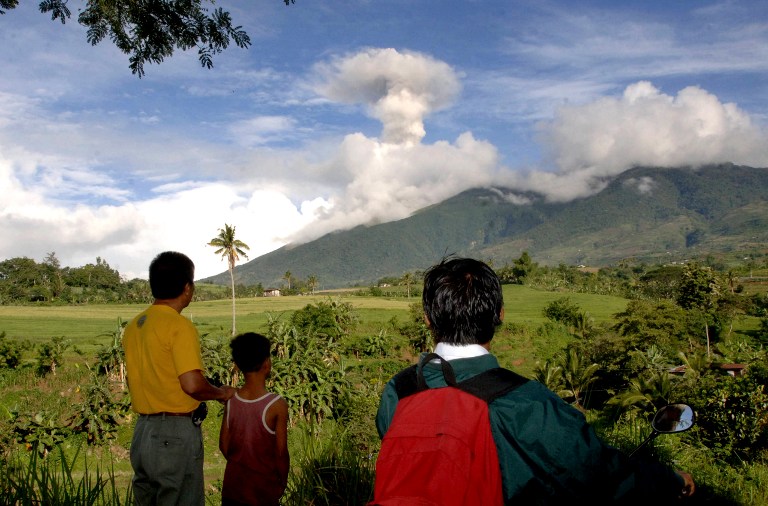This Japanese Island Ate Another Island

An eruption at Nishinoshima in October. (Photo: Japan Coast Guard)
In a rough real estate market, some geological formations have all the luck. Since it first surfaced in 2013, one volcano in Japan has multiplied its land holdings by 12, swallowing up a whole island in the process, Japan Today reports.
Its strategy? Blowing its top for two straight years. In 2013, Nishinoshima was a small, crescent-shaped island about 600 miles south of Tokyo. Then, that November, an underwater volcano began erupting, creating another tiny island nearby. Scientists named the newcomer Niijima, and watched its progress.

Niijima and Nishinoshima in 2013, just after Niijima emerged. (Photo: NASA/Public Domain)
Although volcanic growths of this size regularly disappear as quickly as they arrive, worn down by tides and erosion, this one lasted–and then some. By the end of 2013, thanks to continual eruptions, the once-tiny island had merged with Nishinoshima. By the end of 2014, it had completely overtaken the larger island.

Niijima merges with Nishinoshima. (Photo: NASA/Public Domain)
Now, after two years, the new Nishinoshima is nearly 1.5 miles square and over 300 feet tall. That makes it 12 times its original size–large enough to fit 600 Thanksgiving Day football games next to each other.
The volcano, which is still going strong, is now aboveground, spewing yellow-gray smoke and red-hot lava, which spreads and cools into yet more island. Scientists monitoring it say it the volcanic activity is likely to continue–until, presumably, another tiny island appears, and starts the seismic ouroboros all over again.

Nishinoshima in March 2015. (Photo: NASA/Public Doma
_________________________________________________________________________________
Kanlaon Volcano spews ash; no injuries reported
By: Anthony Q. Esguerra
November 23rd, 2015
KANLAON Volcano in Negros region on Monday night spewed ash that reached 4,921 feet (1,500 meters) above its summit.
The minor ash eruption started at 9:55 p.m. and ended at 10:03 p.m., according to a notification by the Philippine Institute of Volcanology and Seismology (PHIVOLCS).
Rumbling noise was heard in Barangay Mananawin and Sitio Upper Pantao, Barangay Pula, Canlao City in Negros Oriental province as the volcano ejected ash.
Kanlaon Volcano, which has an elevation 2,435 meters, has erupted 26 times, making it one of the most active volcanoes in central Philippines.
The initial report did not mention any injuries or damage to property. Anthony Q. Esguerra
--
Posted by: Lin Kerns <linkerns@gmail.com>

 By Meghan Miner Special to West Hawaii Today
By Meghan Miner Special to West Hawaii Today 
No comments:
Post a Comment